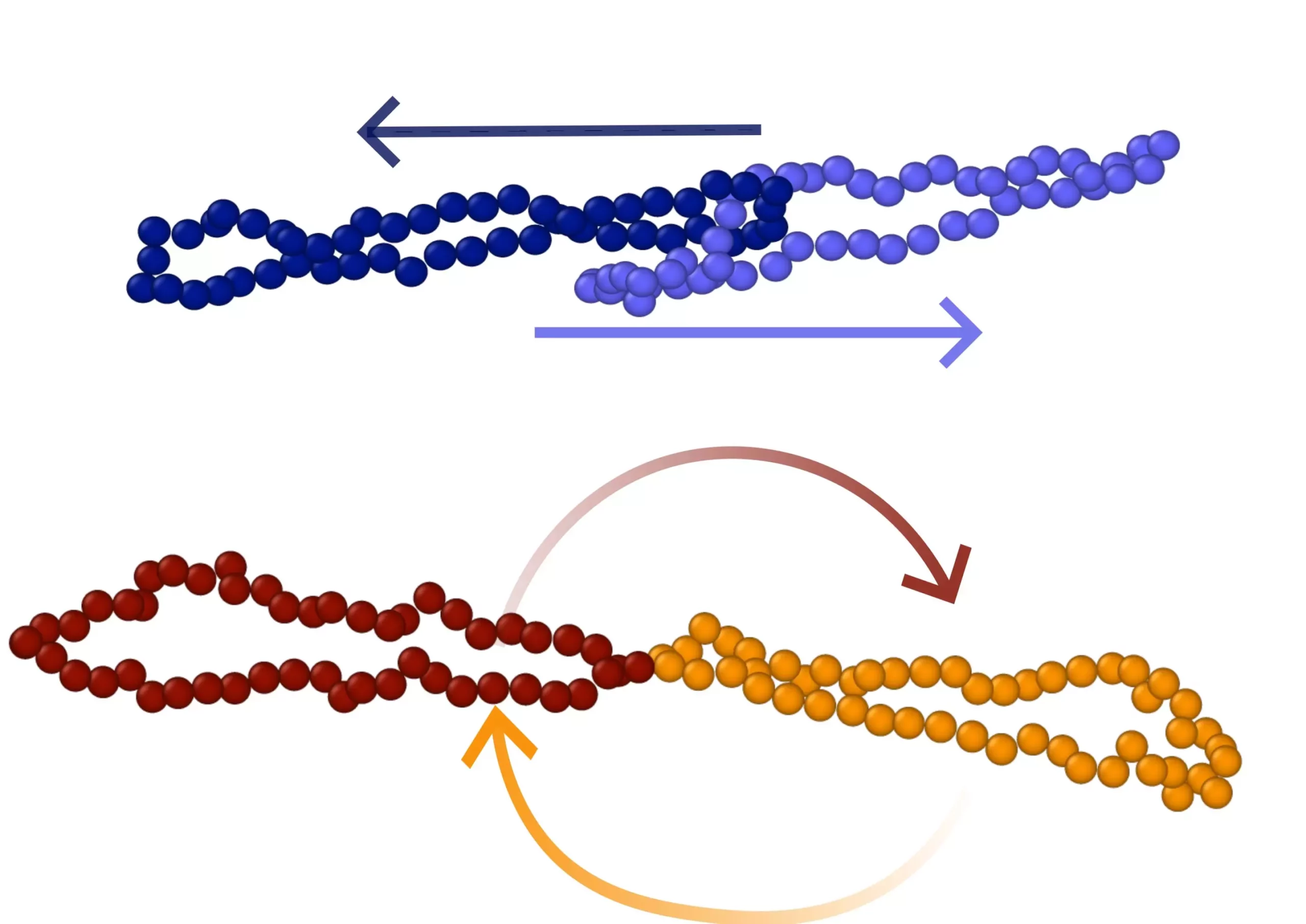The study of fluid shearing and its effects on rheology plays a crucial role in various fields, ranging from industrial processes to medicine. Understanding how fluid layers slide over each other under shear forces provides valuable insights into the behavior of matter. In recent research, a novel approach has been taken to consider the impact of polymer topology on fluid shearing, specifically by studying ring polymers.
Ring polymers are macromolecules composed of repeating units that form closed loops without free ends. In the study conducted by researchers, two types of connected ring pairs were considered: bonded rings (BRs) with chemical linkages and polycatenanes (PCs) linked mechanically via a Hopf link. This unique structure of ring polymers introduces a new dimension to the study of fluid shearing and rheology.
The results of the study revealed surprising differences in the response of BRs and PCs compared to other types of polymers. While traditional polymers exhibit “vorticity tumbling” under shear forces, BRs and PCs displayed completely unexpected dynamic patterns called gradient-tumbling and slip-tumbling. These distinct modes of motion highlight the influence of polymer architecture and the interplay between hydrodynamics and ring topology.
The unique dynamic patterns observed in BRs and PCs have a significant impact on the mechanical properties of the solution. BRs release internal stresses by tumbling, while PCs store stresses permanently, resulting in a higher viscosity. This difference in behavior suggests that the tumbling motions and structures of ring polymers could influence the shear viscosity of highly concentrated solutions or polymer melts. Further experimental and theoretical studies are required to validate this hypothesis.
The study on the impact of polymer topology on fluid shearing sheds light on the complex relationship between hydrodynamics, polymer architecture, and rheological properties. The unexpected dynamic patterns observed in ring polymers emphasize the need for a deeper understanding of how molecular structure influences fluid behavior. Collaborative research efforts such as the one conducted by the University of Vienna, the Sharif University of Technology, and the SISSA play a crucial role in advancing our knowledge of rheology and its applications in various fields.


Leave a Reply